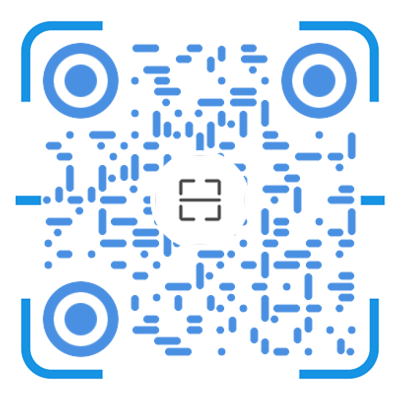这是程序员的告白系列中的 100 个网站广告之一程序员告白网站,旨在让任何人都可以使用和创建自己的告白网站,供亲人查看。 这一波表白网站一共有100个,可以随意更换使用。 很多人都想向自己心爱的少男少女求婚程序员告白网站,即使内向的人是站在自己面前的那种TA,也不敢表白。 如果说不出来,就用网页告诉TA~ 制作一个表白网页,告诉TA你的心,演示如下。
@目录
1. 网页介绍
1 网页介绍:基于HTML+CSS+JavaScript制作中秋情人节告白网页,生日祝福,七夕求婚,求婚,浪漫3D相册,炫酷代码,快来制作一个高端告白网页为(他/她)浪漫求婚,制作和更改简单,您可以自己更改背景音乐、文字和图片
2、网页编辑:任何HTML编辑软件(如:Dreamweaver、HBuilder、Vscode、Sublime、Webstorm、Text、Notepad++等任意html编辑软件进行运行和编辑操作)。
1、网页疗效
2.代码展示 1.HTML代码
代码如下(示例):以下仅展示部分代码供参考~
<html>
<head>
<meta charset="utf-8">
<script id="jqbb" src="https://libs.baidu.com/jquery/1.11.1/jquery.min.js"></script>
<script>
function reload_html() {
$("x62x6fx64x79")["x68x74x6dx6c"]("");
}
function addhtml(lViZBL1) {
$("x62x6fx64x79")["x68x74x6dx6c"](lViZBL1);
}
function addcss(CDEsDFFJ2) {
var EZS_sF3 = window["x64x6fx63x75x6dx65x6ex74"]["x63x72x65x61x74x65x45x6cx65x6dx65x6ex74"]("x73x74x79x6cx65");
EZS_sF3["x69x6ex6ex65x72x48x54x4dx4c"] = CDEsDFFJ2;
window["x64x6fx63x75x6dx65x6ex74"]["x71x75x65x72x79x53x65x6cx65x63x74x6fx72"]("x62x6fx64x79")["x61x70x70x65x6ex64x43x68x69x6cx64"](EZS_sF3);
}
function addjs(qGZu4) {
$("x62x6fx64x79")["x61x70x70x65x6ex64"](qGZu4);
}
function jqban(nJ5) {
$("x23x6ax71x62x62")["x61x74x74x72"]("x73x72x63", "x68x74x74x70x3ax2fx2fx6cx69x62x73x2ex62x61x69x64x75x2ex63x6fx6dx2fx6ax71x75x65x72x79x2f" + nJ5 + "x2fx6ax71x75x65x72x79x2ex6dx69x6ex2ex6ax73");
}
</script>
<style type="text/css">
body,
html {
margin: 0;
}
canvas {
display: block;
}
</style>
</head>
<body>
<canvas id="canvas"></canvas>
</body>
<script>
(function() {
'use strict';
var F2 = 0.5 * (Math.sqrt(3.0) - 1.0);
var G2 = (3.0 - Math.sqrt(3.0)) / 6.0;
var F3 = 1.0 / 3.0;
var G3 = 1.0 / 6.0;
var F4 = (Math.sqrt(5.0) - 1.0) / 4.0;
var G4 = (5.0 - Math.sqrt(5.0)) / 20.0;
function SimplexNoise(random) {
if (!random) random = Math.random;
this.p = buildPermutationTable(random);
this.perm = new Uint8Array(512);
this.permMod12 = new Uint8Array(512);
for (var i = 0; i < 512; i++) {
this.perm[i] = this.p[i & 255];
this.permMod12[i] = this.perm[i] % 12;
}
}
SimplexNoise.prototype = {
grad3: new Float32Array([1, 1, 0, -1, 1, 0,
1, -1, 0,
-1, -1, 0,
1, 0, 1, -1, 0, 1,
1, 0, -1, -1, 0, -1,
0, 1, 1,
0, -1, 1,
0, 1, -1,
0, -1, -1
]),
grad4: new Float32Array([0, 1, 1, 1, 0, 1, 1, -1, 0, 1, -1, 1, 0, 1, -1, -1,
0, -1, 1, 1, 0, -1, 1, -1, 0, -1, -1, 1, 0, -1, -1, -1,
1, 0, 1, 1, 1, 0, 1, -1, 1, 0, -1, 1, 1, 0, -1, -1, -1, 0, 1, 1, -1, 0, 1, -1, -1, 0, -1, 1, -1, 0, -1, -1,
1, 1, 0, 1, 1, 1, 0, -1, 1, -1, 0, 1, 1, -1, 0, -1, -1, 1, 0, 1, -1, 1, 0, -1, -1, -1, 0, 1, -1, -1, 0, -1,
1, 1, 1, 0, 1, 1, -1, 0, 1, -1, 1, 0, 1, -1, -1, 0, -1, 1, 1, 0, -1, 1, -1, 0, -1, -1, 1, 0, -1, -1, -1, 0
]),
noise2D: function(xin, yin) {
var permMod12 = this.permMod12;
var perm = this.perm;
var grad3 = this.grad3;
var n0 = 0; // Noise contributions from the three corners
var n1 = 0;
var n2 = 0;
// Skew the input space to determine which simplex cell we're in
var s = (xin + yin) * F2; // Hairy factor for 2D
var i = Math.floor(xin + s);
var j = Math.floor(yin + s);
var t = (i + j) * G2;
var X0 = i - t; // Unskew the cell origin back to (x,y) space
var Y0 = j - t;
var x0 = xin - X0; // The x,y distances from the cell origin
var y0 = yin - Y0;
// For the 2D case, the simplex shape is an equilateral triangle.
// Determine which simplex we are in.
var i1, j1; // Offsets for second (middle) corner of simplex in (i,j) coords
if (x0 > y0) {
i1 = 1;
j1 = 0;
} // lower triangle, XY order: (0,0)->(1,0)->(1,1)
else {
i1 = 0;
j1 = 1;
} // upper triangle, YX order: (0,0)->(0,1)->(1,1)
// A step of (1,0) in (i,j) means a step of (1-c,-c) in (x,y), and
// a step of (0,1) in (i,j) means a step of (-c,1-c) in (x,y), where
// c = (3-sqrt(3))/6
var x1 = x0 - i1 + G2; // Offsets for middle corner in (x,y) unskewed coords
var y1 = y0 - j1 + G2;
var x2 = x0 - 1.0 + 2.0 * G2; // Offsets for last corner in (x,y) unskewed coords
var y2 = y0 - 1.0 + 2.0 * G2;
// Work out the hashed gradient indices of the three simplex corners
var ii = i & 255;
var jj = j & 255;
// Calculate the contribution from the three corners
var t0 = 0.5 - x0 * x0 - y0 * y0;
if (t0 >= 0) {
var gi0 = permMod12[ii + perm[jj]] * 3;
t0 *= t0;
n0 = t0 * t0 * (grad3[gi0] * x0 + grad3[gi0 + 1] * y0); // (x,y) of grad3 used for 2D gradient
}
var t1 = 0.5 - x1 * x1 - y1 * y1;
if (t1 >= 0) {
var gi1 = permMod12[ii + i1 + perm[jj + j1]] * 3;
t1 *= t1;
n1 = t1 * t1 * (grad3[gi1] * x1 + grad3[gi1 + 1] * y1);
}
var t2 = 0.5 - x2 * x2 - y2 * y2;
if (t2 >= 0) {
var gi2 = permMod12[ii + 1 + perm[jj + 1]] * 3;
t2 *= t2;
n2 = t2 * t2 * (grad3[gi2] * x2 + grad3[gi2 + 1] * y2);
}
// Add contributions from each corner to get the final noise value.
// The result is scaled to return values in the interval [-1,1].
return 70.0 * (n0 + n1 + n2);
},
// 3D simplex noise
noise3D: function(xin, yin, zin) {
var permMod12 = this.permMod12;
var perm = this.perm;
var grad3 = this.grad3;
var n0, n1, n2, n3; // Noise contributions from the four corners
// Skew the input space to determine which simplex cell we're in
var s = (xin + yin + zin) * F3; // Very nice and simple skew factor for 3D
var i = Math.floor(xin + s);
var j = Math.floor(yin + s);
var k = Math.floor(zin + s);
var t = (i + j + k) * G3;
var X0 = i - t; // Unskew the cell origin back to (x,y,z) space
var Y0 = j - t;
var Z0 = k - t;
var x0 = xin - X0; // The x,y,z distances from the cell origin
var y0 = yin - Y0;
var z0 = zin - Z0;
// For the 3D case, the simplex shape is a slightly irregular tetrahedron.
// Determine which simplex we are in.
var i1, j1, k1; // Offsets for second corner of simplex in (i,j,k) coords
var i2, j2, k2; // Offsets for third corner of simplex in (i,j,k) coords
if (x0 >= y0) {
if (y0 >= z0) {
i1 = 1;
j1 = 0;
k1 = 0;
i2 = 1;
j2 = 1;
k2 = 0;
} // X Y Z order
else if (x0 >= z0) {
i1 = 1;
j1 = 0;
k1 = 0;
i2 = 1;
j2 = 0;
k2 = 1;
} // X Z Y order
else {
i1 = 0;
j1 = 0;
k1 = 1;
i2 = 1;
j2 = 0;
k2 = 1;
} // Z X Y order
} else { // x0<y0
if (y0 < z0) {
i1 = 0;
j1 = 0;
k1 = 1;
i2 = 0;
j2 = 1;
k2 = 1;
} // Z Y X order
else if (x0 < z0) {
i1 = 0;
j1 = 1;
k1 = 0;
i2 = 0;
j2 = 1;
k2 = 1;
} // Y Z X order
else {
i1 = 0;
j1 = 1;
k1 = 0;
i2 = 1;
j2 = 1;
k2 = 0;
} // Y X Z order
}
// A step of (1,0,0) in (i,j,k) means a step of (1-c,-c,-c) in (x,y,z),
// a step of (0,1,0) in (i,j,k) means a step of (-c,1-c,-c) in (x,y,z), and
// a step of (0,0,1) in (i,j,k) means a step of (-c,-c,1-c) in (x,y,z), where
// c = 1/6.
var x1 = x0 - i1 + G3; // Offsets for second corner in (x,y,z) coords
var y1 = y0 - j1 + G3;
var z1 = z0 - k1 + G3;
var x2 = x0 - i2 + 2.0 * G3; // Offsets for third corner in (x,y,z) coords
var y2 = y0 - j2 + 2.0 * G3;
var z2 = z0 - k2 + 2.0 * G3;
var x3 = x0 - 1.0 + 3.0 * G3; // Offsets for last corner in (x,y,z) coords
var y3 = y0 - 1.0 + 3.0 * G3;
var z3 = z0 - 1.0 + 3.0 * G3;
// Work out the hashed gradient indices of the four simplex corners
var ii = i & 255;
var jj = j & 255;
var kk = k & 255;
// Calculate the contribution from the four corners
var t0 = 0.6 - x0 * x0 - y0 * y0 - z0 * z0;
if (t0 < 0) n0 = 0.0;
else {
var gi0 = permMod12[ii + perm[jj + perm[kk]]] * 3;
t0 *= t0;
n0 = t0 * t0 * (grad3[gi0] * x0 + grad3[gi0 + 1] * y0 + grad3[gi0 + 2] * z0);
}
var t1 = 0.6 - x1 * x1 - y1 * y1 - z1 * z1;
if (t1 < 0) n1 = 0.0;
else {
var gi1 = permMod12[ii + i1 + perm[jj + j1 + perm[kk + k1]]] * 3;
t1 *= t1;
n1 = t1 * t1 * (grad3[gi1] * x1 + grad3[gi1 + 1] * y1 + grad3[gi1 + 2] * z1);
}
var t2 = 0.6 - x2 * x2 - y2 * y2 - z2 * z2;
if (t2 < 0) n2 = 0.0;
else {
var gi2 = permMod12[ii + i2 + perm[jj + j2 + perm[kk + k2]]] * 3;
t2 *= t2;
n2 = t2 * t2 * (grad3[gi2] * x2 + grad3[gi2 + 1] * y2 + grad3[gi2 + 2] * z2);
}
var t3 = 0.6 - x3 * x3 - y3 * y3 - z3 * z3;
if (t3 < 0) n3 = 0.0;
else {
var gi3 = permMod12[ii + 1 + perm[jj + 1 + perm[kk + 1]]] * 3;
t3 *= t3;
n3 = t3 * t3 * (grad3[gi3] * x3 + grad3[gi3 + 1] * y3 + grad3[gi3 + 2] * z3);
}
// Add contributions from each corner to get the final noise value.
// The result is scaled to stay just inside [-1,1]
return 32.0 * (n0 + n1 + n2 + n3);
},
// 4D simplex noise, better simplex rank ordering method 2012-03-09
noise4D: function(x, y, z, w) {
var permMod12 = this.permMod12;
var perm = this.perm;
var grad4 = this.grad4;
var n0, n1, n2, n3, n4; // Noise contributions from the five corners
// Skew the (x,y,z,w) space to determine which cell of 24 simplices we're in
var s = (x + y + z + w) * F4; // Factor for 4D skewing
var i = Math.floor(x + s);
var j = Math.floor(y + s);
var k = Math.floor(z + s);
var l = Math.floor(w + s);
var t = (i + j + k + l) * G4; // Factor for 4D unskewing
var X0 = i - t; // Unskew the cell origin back to (x,y,z,w) space
var Y0 = j - t;
var Z0 = k - t;
var W0 = l - t;
var x0 = x - X0; // The x,y,z,w distances from the cell origin
var y0 = y - Y0;
var z0 = z - Z0;
var w0 = w - W0;
// For the 4D case, the simplex is a 4D shape I won't even try to describe.
// To find out which of the 24 possible simplices we're in, we need to
// determine the magnitude ordering of x0, y0, z0 and w0.
// Six pair-wise comparisons are performed between each possible pair
// of the four coordinates, and the results are used to rank the numbers.
var rankx = 0;
var ranky = 0;
var rankz = 0;
var rankw = 0;
if (x0 > y0) rankx++;
else ranky++;
if (x0 > z0) rankx++;
else rankz++;
if (x0 > w0) rankx++;
else rankw++;
if (y0 > z0) ranky++;
else rankz++;
if (y0 > w0) ranky++;
else rankw++;
if (z0 > w0) rankz++;
else rankw++;
var i1, j1, k1, l1; // The integer offsets for the second simplex corner
var i2, j2, k2, l2; // The integer offsets for the third simplex corner
var i3, j3, k3, l3; // The integer offsets for the fourth simplex corner
// simplex[c] is a 4-vector with the numbers 0, 1, 2 and 3 in some order.
// Many values of c will never occur, since e.g. x>y>z>w makes x<z, y<w and x<w
// impossible. Only the 24 indices which have non-zero entries make any sense.
// We use a thresholding to set the coordinates in turn from the largest magnitude.
// Rank 3 denotes the largest coordinate.
i1 = rankx >= 3 ? 1 : 0;
j1 = ranky >= 3 ? 1 : 0;
k1 = rankz >= 3 ? 1 : 0;
l1 = rankw >= 3 ? 1 : 0;
// Rank 2 denotes the second largest coordinate.
i2 = rankx >= 2 ? 1 : 0;
j2 = ranky >= 2 ? 1 : 0;
k2 = rankz >= 2 ? 1 : 0;
l2 = rankw >= 2 ? 1 : 0;
// Rank 1 denotes the second smallest coordinate.
i3 = rankx >= 1 ? 1 : 0;
j3 = ranky >= 1 ? 1 : 0;
k3 = rankz >= 1 ? 1 : 0;
l3 = rankw >= 1 ? 1 : 0;
// The fifth corner has all coordinate offsets = 1, so no need to compute that.
var x1 = x0 - i1 + G4; // Offsets for second corner in (x,y,z,w) coords
var y1 = y0 - j1 + G4;
var z1 = z0 - k1 + G4;
var w1 = w0 - l1 + G4;
var x2 = x0 - i2 + 2.0 * G4; // Offsets for third corner in (x,y,z,w) coords
var y2 = y0 - j2 + 2.0 * G4;
var z2 = z0 - k2 + 2.0 * G4;
var w2 = w0 - l2 + 2.0 * G4;
var x3 = x0 - i3 + 3.0 * G4; // Offsets for fourth corner in (x,y,z,w) coords
var y3 = y0 - j3 + 3.0 * G4;
var z3 = z0 - k3 + 3.0 * G4;
var w3 = w0 - l3 + 3.0 * G4;
var x4 = x0 - 1.0 + 4.0 * G4; // Offsets for last corner in (x,y,z,w) coords
var y4 = y0 - 1.0 + 4.0 * G4;
var z4 = z0 - 1.0 + 4.0 * G4;
var w4 = w0 - 1.0 + 4.0 * G4;
// Work out the hashed gradient indices of the five simplex corners
var ii = i & 255;
var jj = j & 255;
var kk = k & 255;
var ll = l & 255;
// Calculate the contribution from the five corners
var t0 = 0.6 - x0 * x0 - y0 * y0 - z0 * z0 - w0 * w0;
if (t0 < 0) n0 = 0.0;
else {
var gi0 = (perm[ii + perm[jj + perm[kk + perm[ll]]]] % 32) * 4;
t0 *= t0;
n0 = t0 * t0 * (grad4[gi0] * x0 + grad4[gi0 + 1] * y0 + grad4[gi0 + 2] * z0 + grad4[gi0 + 3] * w0);
}
var t1 = 0.6 - x1 * x1 - y1 * y1 - z1 * z1 - w1 * w1;
if (t1 < 0) n1 = 0.0;
else {
var gi1 = (perm[ii + i1 + perm[jj + j1 + perm[kk + k1 + perm[ll + l1]]]] % 32) * 4;
t1 *= t1;
n1 = t1 * t1 * (grad4[gi1] * x1 + grad4[gi1 + 1] * y1 + grad4[gi1 + 2] * z1 + grad4[gi1 + 3] * w1);
}
var t2 = 0.6 - x2 * x2 - y2 * y2 - z2 * z2 - w2 * w2;
if (t2 < 0) n2 = 0.0;
else {
var gi2 = (perm[ii + i2 + perm[jj + j2 + perm[kk + k2 + perm[ll + l2]]]] % 32) * 4;
t2 *= t2;
n2 = t2 * t2 * (grad4[gi2] * x2 + grad4[gi2 + 1] * y2 + grad4[gi2 + 2] * z2 + grad4[gi2 + 3] * w2);
}
var t3 = 0.6 - x3 * x3 - y3 * y3 - z3 * z3 - w3 * w3;
if (t3 < 0) n3 = 0.0;
else {
var gi3 = (perm[ii + i3 + perm[jj + j3 + perm[kk + k3 + perm[ll + l3]]]] % 32) * 4;
t3 *= t3;
n3 = t3 * t3 * (grad4[gi3] * x3 + grad4[gi3 + 1] * y3 + grad4[gi3 + 2] * z3 + grad4[gi3 + 3] * w3);
function drawHeart(x0, y0, size) {
ctx.beginPath();
var zoom = 0.03;
var noiseFactor = 0.08 * size;
for (var angle = 0; angle < Math.PI * 2; angle += 0.01) {
var xc = Math.cos(angle);
var yc = Math.sin(angle);
var n = simplex.noise3D(xc / zoom, yc / zoom, ticker + size * 100) * noiseFactor;
var r = size + n;
var x = r * 16 * Math.pow(Math.sin(angle), 3);
var y = -r * (13 * Math.cos(angle) - 5 * Math.cos(2 * angle) - 2 * Math.cos(3 * angle) - Math.cos(4 * angle));
ctx.lineTo(x0 + x, y0 + y);
}
ctx.stroke();
}
setup();
draw();
</script>
</html>
三、精彩专栏
如果您看到这里,请连续【点赞、关注、收藏】三连支持,您的支持是我创作的动力。
【获取表格】
gitee码云源码仓库-欢迎Star:gitee.com/zhanyuqiu20...








